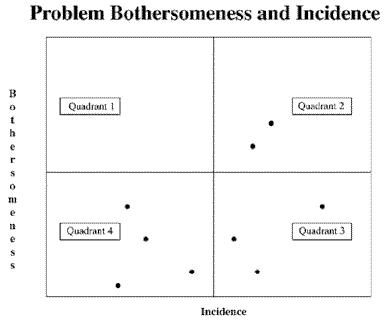Editor’s note: David Glenn is president of Connected Inc., a Cos Cob, Conn., research firm.
Many companies now provide toll-free telephone numbers on their packaging to encourage customer feedback to the consumer affairs (complaint) department. But what happens next? How do companies use this information, if at all? Are complaints problems, or just symptoms of problems? What is the connection between customer complaints and problems? It is predictable? Should companies spend money fixing problems based on complaint data?
Companies make three main choices with regard to complaint data: 1) do nothing, 2) treat the complaints as problems, 3) figure out the connection between complaints and underlying problems. This brief article describes each.
The decision to do nothing merits little discussion. Some companies view customer feedback as an annoyance, whether it takes the form of complaints, surveys, or any other marketing research. At these companies, one may hear such statements as “We’ll let the cash register tell us how we’re doing.” One problem with this approach is that cash registers are not very diagnostic when it comes to telling which of the hundreds of things that could have gone wrong actually did go wrong.
The second approach is to treat a complaint as if the complaint itself is the problem. For example, I once worked for a large research company that provided syndicated sales data to marketing researchers. One year, the company decided to cut costs by not attending a major syndicated sales data conference. This started a rumor that my company was going out of business. When I told the president, he said the rumor was false and demanded the names of the few clients who had expressed the issue aloud. He said he would call them and “straighten them out.” This president was unable or unwilling to generalize beyond the people who were more vocal than the thousands of clients who did not speak out. Less than two years later, the company actually did go out of business, a victim of many such myopic decisions.
A less dramatic example of treating complaints as problems is the practice of sending apology letters to the complainers, along with a coupon to buy more of the offending product. The problem that triggered the complaint goes on, as do the consumers in search of an alternative brand.
Why is it so hard to generalize beyond the complaint to a root source of dissatisfaction? First, the number of complaints is usually very low, and therefore hard for management to take seriously. It is not unusual for a brand with over $100 million in sales to generate less than 10,000 complaints in a year. Only handfuls of customers will complain about any one issue. So if one believes that everybody with a problem complains, then the brand can well afford to withstand the complaints! Consumer affairs departments are partly to blame for this complacency. In addition to their focus on complaints as opposed to all customers with problems, consumer affairs reports to management show mind-numbing detail, not calls to action. A recent report stated such facts as “foreign matter in product complaints remain constant at 23 per 10,000 packages sold.”
However, most dissatisfied customers do not complain. They either just silently put up with the problems or switch brands. This means that complaints are a market signal of some kind, and therefore worth understanding.
In recent years, more and more companies have reorganized their consumer affairs departments so that they answer to marketing research managers. Senior management usually hopes that researchers will be able to connect all sources of consumer feedback, whether from toll-free numbers, product tests, tracking studies, or any other source. Senior management wants researchers to seek out convergence of information, and now this includes consumer affairs data.
Therefore, the third approach is to make a connection between complaints and problems. This is easily solved using a problem detection methodology in which the researcher surveys a representative sample of past customers to see which problems, if any, occurred, and how bothersome they were to the customer. The problem list should be the same detailed list from the complaint data archives, so that a multiplier can be produced for each problem and each brand. For example, suppose 250 complaints registered for “package top difficult to open” for Brand A. If the problem detection study shows that 10 percent of the 20 million buying households had that problem, then the multiplier is 8,000 (2 million/250). Every complaint of this type for this brand represents 8,000 problems of this type.
It is easy to plot problem data in a way that motivates discussion and, hopefully, action. For example, Fig. 1 (below) shows that problems in quadrant two, which irritate more people and annoy them more when they happen, deserve more action than problems in other quadrants.
 |
Sometimes clients ask us if there are rules of thumb they can use for multipliers instead of conducting the research. We have two findings on this topic. We found that rules of thumb do not hold up to management scrutiny as well as real data from real research. Remember that the consumer affairs data are usually starting out without much credibility in the first place. It is worthwhile to quantify the issues accurately. Our second finding is that complaints and problems are subject to consumer expectations, and expectations vary by brand. Therefore, a rule of thumb for one brand does not translate well to another in a predicable way.
After making an explicit connection between complaints and problems, researchers can start reporting problems as well as economic consequences of them (using purchase intent data from the problem detection study), giving management the information they need to eliminate the problems and increase satisfaction.
